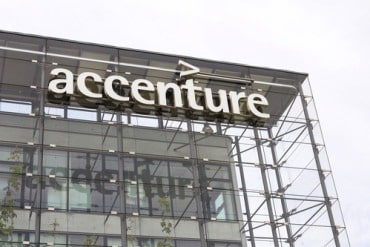
Red Hat CEO Matt Hicks sees the accelerated growth of AI as the new “open source” model like the one that Red Hat has been espousing for three decades.
Red Hat did not disappoint! Its Red Hat Summit, held this week in Boston, saw a bevy of announcements from the company. AI was at the heart of many of these announcements.
Day 1 of the conference focused on addressing the realities and constraints that organizations are dealing with while trying to grow their businesses and drive new customer relationships. Day 2 centered on how organizations can drive innovation at scale, from turning cloud sprawl into cloud strategy. It also addressed new opportunities on the edge and how to navigate an ever-shifting security landscape and the growing demand for sustainable technology.
Today’s realities bring organizations’ need for help in all of these areas to the fore. To start, most organizations find that they must do more with less. According to IDC, “90% of global organizations will experience the IT skills crisis by 2025.” That means that “by 2026, enterprises that did not effectively address the talent and digital skills gap in their organization will realize a constraint on revenue growth opportunities by 20%.”
Red Hat’s message in these difficult times is that they will help you manage the pressure of making the most of what you have while at the same time cultivating the skills you need to find ways to deliver more and faster. AI was front and center in addressing these challenges.
See additional announcements from the Red Hat Summit here.
AI is Front and Center
Matt Hicks, President and CEO of Red Hat, opened the conference by comparing the accelerated growth of AI as the new “open source” model to the one that Red Hat has been espousing for three decades. “With AI, I feel like I’m watching the exact same open source innovation process of Linux all over again, but it’s happening 100 times faster than I experienced with Linux.”
Proving Matt’s point on the speed of AI adoption, one needs just consider the dramatic AI transformation of OpenShift Kubernetes users. As little as 18 months ago, Abhinav Joshi, Director of OpenShift Product Marketing, and I were discussing how OpenShift developers and administrators had almost no interest in AI. Fast forward to today, and Red Hat OpenShift AI is now a foundational offering within Red Hat’s open hybrid cloud solutions.
At the Summit, new capabilities were announced for Red Hat OpenShift AI, which builds and expands upon Red Hat OpenShift and Red Hat OpenShift Data Science (RHODS). According to the company, with this announcement, Red Hat is providing IT operation leaders, data scientists, and developers with a consistent framework for training, serving, monitoring, and managing the lifecycle of AI/ML models and applications from experiments to production.
Unlocking the potential of AI is still quite challenging, complex, and expensive. The training and initial deployment of general large language models (LLMs) is a massive undertaking requiring huge infrastructure processing investments that is just not practical except for the largest of companies. Customers across all industries are researching ways to benefit from these LLMs by fine-tuning them with domain-specific data that cover their specific use cases. Further investment is needed to train, deploy, and serve these models. Red Hat OpenShift AI is targeted at this pain point.
Another AI announcement from Red Hat was around domain-specific AI singularly focused on automation, targeting the critical IT digital skills crisis. According to IDC, CIOs that invest in digital adoption platforms and automated learning technologies will see a 40% increase in productivity by 2025, delivering greater speed to expertise.”
Red Hat Ansible LightSpeed is designed to automate event-driven decision making, leveraging numerous sources of events across multiple IT use cases. According to Red Hat, LightSpeed helps drive consistent and accurate automation adoption across an organization, making it easier for novice users to automate tasks while removing the burden of low-level task creation from experienced automators. Per Matt Hicks, “solutions like Ansible LightSpeed raise the floor and ceiling on developer and operator onboarding and productivity.” This means increasing the number of developers and operators that can be onboarded quickly, plus increasing their productivity.
The solution takes advantage of IBM technology, leveraging the natural language capabilities of IBM’s new Watson Code Assistant. According to IBM, Watson Code Assistant is designed to reduce the complexity of coding through AI-generated content recommendations. Presumably, this may afford Red Hat a first-mover advantage, as developing Ansible Playbooks is the first available use case for IBM’s new offering.
See also: Nearly Every Job Will be Touched by Generative AI
Embracing the technology shift afforded by AI
It is clear AI is triggering a shift in the industry. CEO Hicks summarized the point in a recent blog noting, “AI has reached the tipping point, and we cannot ignore it. Instead, we need to decide how, where, and WHY we will harness it and use it to further our organizations.” The announcements and the discussions in many of the Summit’s sessions tried to address these issues.




























